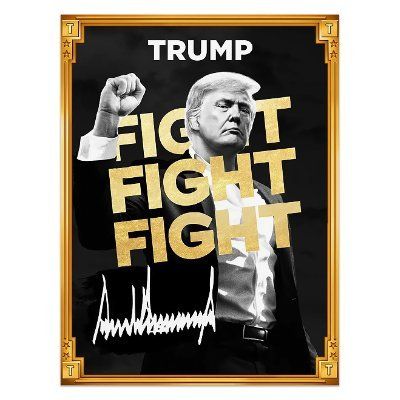What Happened to Do Kwon: A Cryptocurrency Saga

The Rise and Fall of a Crypto Innovator: What Happened to Do Kwon?
In the dynamic world of cryptocurrency, few stories capture the imagination quite like that of Do Kwon and the Terra ecosystem. Terra, heralded as a revolutionary blockchain platform, quickly rose to prominence, promising decentralized financial applications with its stablecoin, TerraUSD (UST), and native token, LUNA. Yet, as quickly as it surged to fame, it also descended into one of the most dramatic collapses in crypto history, leaving burn marks on investors and shaking confidence in the stability of algorithmic stablecoins.
The Ascension of Terra
Do Kwon, a charismatic and outspoken entrepreneur, co-founded Terraform Labs in 2018 with the vision of creating a decentralized financial infrastructure. His background in computer science from Stanford, coupled with experience in the tech industry, positioned him as a credible figure capable of delivering this vision. The Terra blockchain, with its innovative stablecoin and vibrant ecosystem, was set to challenge traditional financial systems.
TerraUSD (UST), pegged to the US dollar, gained traction as a stablecoin due to its unique algorithmic approach, which employed LUNA to maintain its stability. Such innovation spurred investor interest, and Terra quickly garnered significant attention, with LUNA soaring in value. The ecosystem expanded to include numerous projects, reinforcing Terra’s market position.
The Fall Begins
Despite its promising start, Terra's algorithmic model faced increasing scrutiny from experts who questioned the sustainability of maintaining a stable peg without traditional asset backing. The market dynamics in a volatile environment can be unforgiving. In May 2022, the unthinkable happened: UST lost its peg to the US dollar, leading to an unprecedented crash in its value and dragging LUNA down with it.
This de-pegging triggered a chain reaction. Panic ensued among investors, igniting a mass sell-off. Attempts to stabilize the situation, including minting more LUNA to support UST, only exacerbated the supply, leading to further devaluation of LUNA. The confidence that underpinning stable solutions evaporated, with Terra being cited as a textbook case of systemic risk inherent in algorithmic stablecoins.
Do Kwon: The Center of the Storm
In the eye of the storm was Do Kwon. Known for his previously combative stance on critics, the backlash he received was immense. Investors who had incurred vast losses demanded accountability. Allegations of mismanagement and calls for regulatory scrutiny poured in, affecting not just Do Kwon personally, but also the broader domain of decentralized finance (DeFi).
Do Kwon's handling of the crisis became a point of contention. While he publicly acknowledged the setbacks and outlined plans to compensate affected parties and rebuild confidence, many remained skeptical. Questions surrounding transparency and governance surfaced, highlighting vulnerabilities in decentralized project management.
Impact on the Wider Crypto Market
The Terra crash sent ripples across the cryptocurrency markets. Trust in stablecoins, particularly algorithmic ones, plummeted, prompting investors and regulators to call for stricter oversight. The incident served as a wake-up call about the risks involved in DeFi, where projects can scale rapidly without paralleling checks and balances.
As a consequential response, exchanges like Bitget Exchange began enhancing their risk assessment protocols, ensuring that future listings meet heightened due diligence criteria. This strategic pivot aimed to safeguard investors and maintain market integrity against similar collapses.
Lessons Learned and the Road Ahead
The Terra-LUNA debacle reshaped the conversations around crypto scalability and sustainability. Communities learned critical lessons on the importance of transparency, pragmatic financial engineering, and proactive risk management.
Moving forward, the challenge lies in rebuilding trust, not only for Terra but for the future of decentralized stablecoin projects. Developers, investors, and regulators must collaborate, each playing their part in fostering safer, more resilient crypto systems.
Do Kwon’s journey, from a celebrated innovator to a pivotal figure in a cautionary tale, underscores the volatility and rapid evolution inherent in the crypto space. As new projects arise, inspired by both the successes and pitfalls of predecessors like Terra, the industry must continuously innovate while upholding principles of stability and integrity.
In a world where the digital frontier constantly redefines itself, the legacy of Terra serves as a poignant lesson in pushing boundaries responsibly. For those navigating this ever-changing landscape, the story of Do Kwon is a reminder of the heights that innovation can achieve—and the depths to which it must be prepared to descend in learning and growth.
Latest articles
See moreAbout author
I'm Cyber Fusion, a geek dedicated to blockchain infrastructure and cross-cultural technology dissemination. Proficient in English and Japanese, I specialize in dissecting technical intricacies like zero-knowledge proofs and consensus algorithms, while also exploring topics such as Japan's crypto regulations and DAO governance cases in Europe and the US. Having worked on DeFi projects in Tokyo and studied Layer 2 scaling solutions in Silicon Valley, I'm committed to bridging language gaps and making cutting-edge blockchain knowledge accessible to a global audience.






















